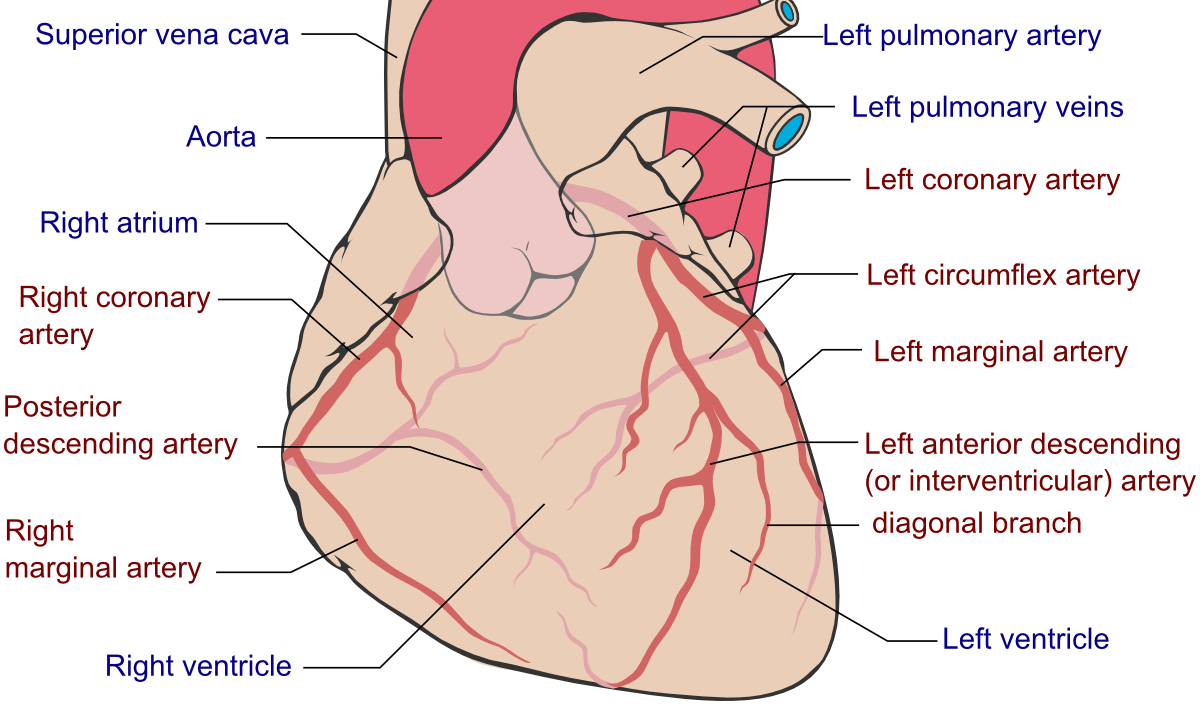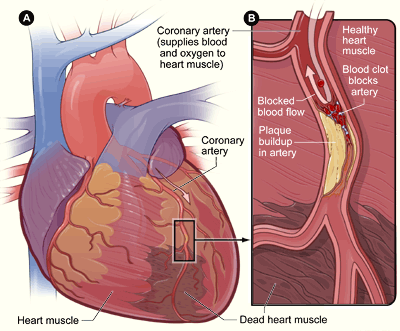Coronary Artery Disease: Part 1
Coronary Artery Disease (CAD), Coronary Heart Disease (CHD), Heart Disease, so many terms for in general the same thing. These terms describe the disease process that is the cause of myocardial infarction, another fancy term for, a heart attack. This blog post is going to be a description of that process, and the magnitude of the problem in the United States, in as simple way possible.
The heart is a powerful organ. It is basically a structure of muscular chambers. These chambers use their muscular walls to contract and squeeze blood to different parts of the body.
As you can see from the next diagram, on the outside of the heart structure are a series of vessels called the coronary arteries. These blood vessels are the keys to maintaing function to a properly beating heart. They supply blood to the muscles of the heart.
As many of you know, cells require oxygen to function, and since blood carries oxygen, the flow of blood is critical. When times of increased demand by the body, for example jogging, the body beautifully compensates by supplying the body with more blood circulation and ultimately more oxygen. In this example, you breath faster, taking in more oxygen. Your heart beats faster, circulating this blood and delivering more oxygen.
With Coronary Artery Disease, those important coronary arteries become narrowed or shut off completely leading to angina, aka chest pain, or a myocardial infarction which can lead to death.
As published in the Journal "Circulation" in 1998:
"Sudden cardiac death is the most common and often the first manifestation of coronary heart disease and is responsible for ≈50% of the mortality from cardiovascular disease in the United States and other developed countries. at least 80% of patients who experience sudden cardiac death have coronary artery disease as the underlying anatomic substrate due to atherosclerotic changes of the coronary arteries."
According to the Centers for Disease Control and Prevention (CDC):
"About 610,000 people die of heart disease in the United States every year–that’s 1 in every 4 deaths. Heart disease is the leading cause of death for both men and women. More than half of the deaths due to heart disease in 2009 were in men.Every year about 735,000 Americans have a heart attack. Of these, 525,000 are a first heart attack and 210,000 happen in people who have already had a heart attack."
According to Robbin's Basic Pathology Textbook:
" Fatty streaks can appear in the aortas of infants younger than 1 year of age and are present in virtually all children older than 10 years, regardless of genetic, clinical, or dietary risk factors. The relationship of fatty streaks to atherosclerotic plaques is uncertain; although fatty streaks may evolve into plaques, not all are destined to progress. Nevertheless, it is notable that coronary fatty streaks form during adolescence at the same anatomic sites that are prone to plaques later in life. "
This signifies this is not a disease of middle and old age, it is a disease that is brewing from nearly the beginning of our lives. We have to recognize that we have to start preventing cardiovascular disease as early as possible, and yes that means even with our kids.
So what are the, known "risk factors"?
Stay tuned for PART 2 where we will dive deeper into this discussion! Until next time!
To your health,
Dr. Peavler




No comments:
Post a Comment